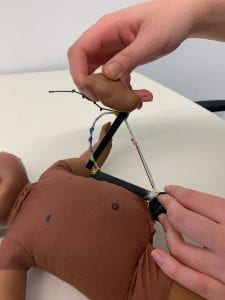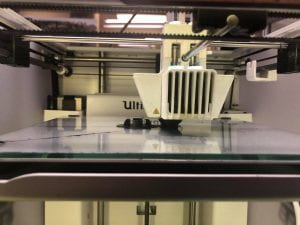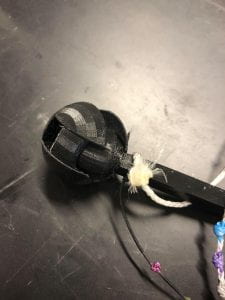Hello! As one of the three interns that are not bio-engineering majors, I’d like to begin my first blog by talking a little bit about what drew me to the Global Health Technologies Minor and this internship with Rice 360. For most of my life, I’ve known that I wanted to become a doctor eventually. Also, pretty early on in high school, I became aware that there are there so many other factors that affect health other than the skills or knowledge of an individual doctor and that this statement was especially true for those living in poverty. So, when I visited Rice as a high school, during the information session, my interest was piqued when the admissions officer briefly mentioned this internship and the opportunity it brought to really look at and address some of the more systemic factors that affect health. However, when she started talking about its focus on technology, I cast this program aside in my mind as something I personally was not capable of.
This perspective stayed with me during my first weeks at Rice as I thought about what I wanted to study and to an extent, throughout my first semester even as I was taking the Intro to Global Health Course. I loved the minor and the Rice 360 program, but I was terrified of the word “technologies.” As a girl, I never really was encouraged or given the opportunity as a child to explore engineering or, even, just building things. By the time I had the opportunity to explore engineering through extracurriculars in high school (thanks to Science Olympiad), I had already told myself that engineering was something I wasn’t interested in or capable of.
I realized how flawed this mindset was when taking GLHT 360. My team, also comprised of people who had no background in engineering whatsoever, and I were tasked with designing a training model for the Ballard Score assessment. To give some quick background on what this entails, the Ballard Score is a examination with 12 components that is commonly used in lower resource settings to determine how mature the baby is at birth. Initially, we struggled so much with just trying to figure out how to brainstorm a specific solution or how to prototype. This project was the first time I’d ever used a hammer or a drill on my own, far less gained exposure to 3D printing components or creating digital diagrams with Adobe Illustrator. Even though there was definitely a learning curve, I realized that, like upperclassmen and our professor, Dr. Bond, tried to assure us, these techniques could be learned. And we did end up successfully creating a prototype for one of the 12 components of the Ballard Score, and it was amazing to something go from an idea in our heads to a physical thing.

Although there is a long way to go to create a complete training model for the Ballard Score, I’m so excited to be taking our model to Malawi to get feedback from healthcare providers. Over the last week and a half in the OEDK, in the process of polishing up some aspects of our model and watching the interns prepare other technologies that are being brought to our sites, I’ve continued my path in gaining more familiarity in prototyping techniques for engineering. One day, Hannah showed us how to solder, and, on another day, Matthew gave us a quick crash course in Arduino. I was aware of these techniques before, but, while I am hardly an expert in either of these, I’d never imagined being able to do them at all.
In addition, to clean up the appearance of our Ballard Score training model, I switched out a foam component we used to a 3D printed version. That was the first time I used CAD on my own (one of my teammates did most of the CAD for our project). It took me a day and a half to learn to use TinkerCAD through their modules and create these very uniquely shaped pieces, but I did it! And, with Alex’s help, I learned how to operate the 3D printers in the OEDK.


I’m looking forward to whatever I may have the chance to learn over the next week in the OEDK, and, while, I may not be directly involved in an engineering project while in Malawi, hopefully another team builds on and develops other aspects of the Ballard Score training model, and I’m excited to collaborate with them/support them in any way I can. Half a year ago, who knew I would be this invested in an engineering project?
-Sally
